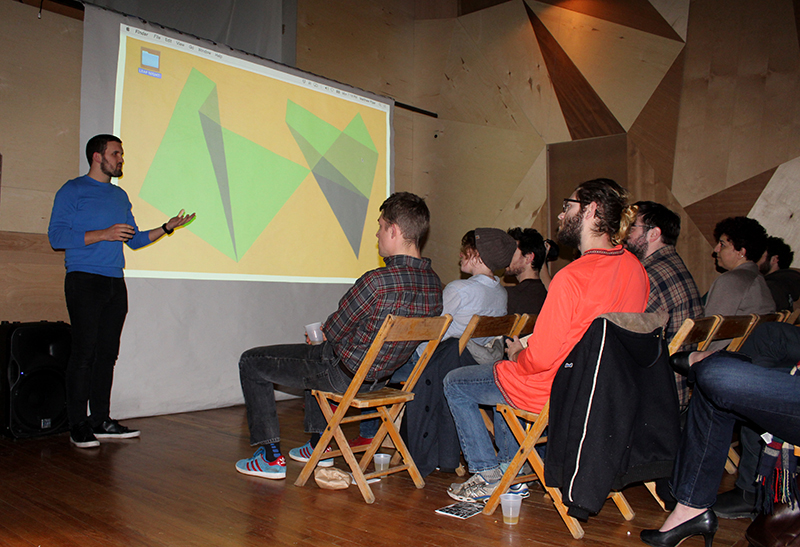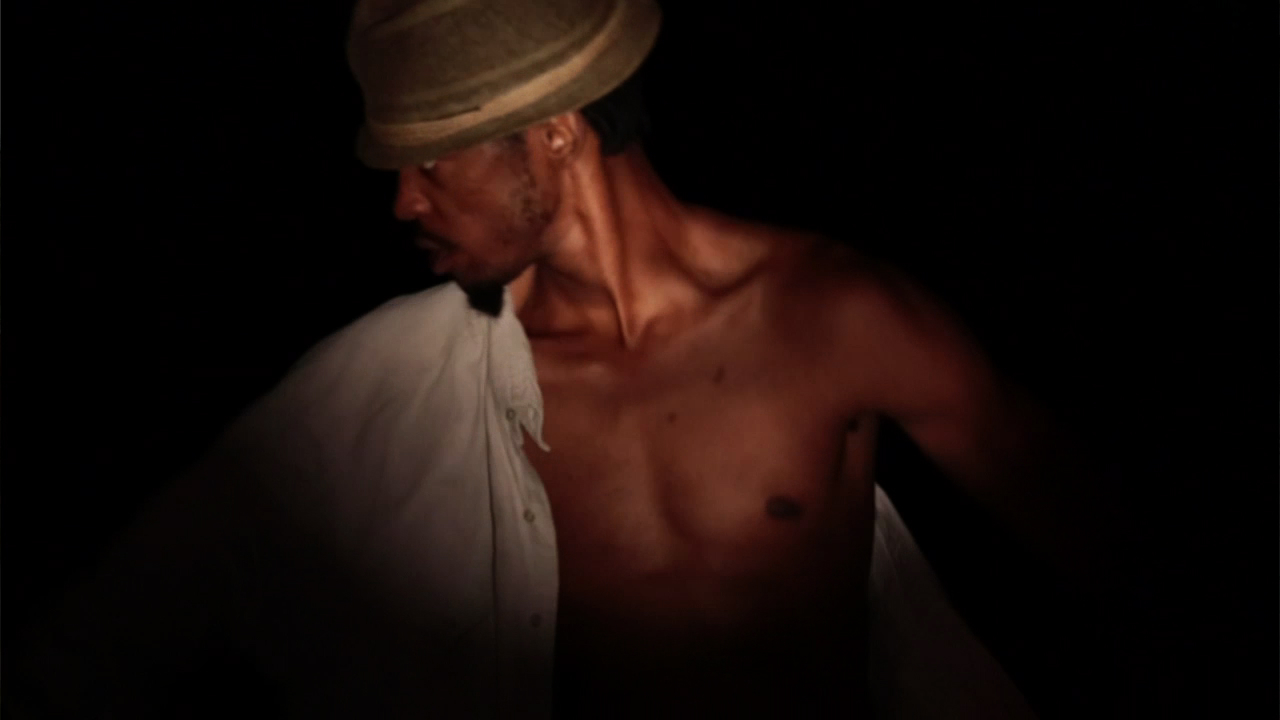
In Detroit, dance films become the art genre du jour
Above: The evening’s curator, Matthew Piper. Photo courtesy Michael Francois Soucisse.
On Feb. 29, arts writer and lover-of-dance Matthew Piper marked the occasion with “Leap Night!”–a lovely collection of short dance films that were screened at Play House in Detroit. A former Knight Arts blogger, Piper makes it a point to note that he is not a dancer. “In school plays, I was the one going left when everyone else stepped right,” he said in his opening remarks. He does, however, have a deep love and appreciation for dance, which he communicates through his writing and in this new dance film series, which he hopes to reprise in the summer.
Spanning several decades, the program included: “A Study in Choreography for Camera” (1948) by Maya Deren; “Time I Change” (2012) by Oren Goldenberg, a local production featuring dance by Knight Arts grantee Haleem “Stringz” Rasul; “Calico Mingling” (1973) by Babette Mangolte; “Piano Phase (from Fase)” (2002) by Thierry de May; “Hand Movie” (1966) by Yvonne Rainer and William Davis; “Beach Birds for Camera” (1993) by Elliot Caplan; and “Accumulation with Talking Plus Watermotor” (1986) by Jonathan Demme.
“The inspiration for the night actually came from Liza Bielby of The Hinterlands [the performance ensemble that helps run Play House],” Piper said in an email interview. “I attended a terrific traveling program of contemporary dance-for-camera films from around the country last summer at Play House. Afterward, I was rambling on to Liza about some historic films in the genre I’m especially fond of, and she invited me to show them one day. I’m so pleased to have the opportunity, not only because I’m a big dance and film nerd, but also because I don’t think there are enough opportunities to engage with dance in Detroit.”
While Piper’s statement may be true, local dance fans will have another chance to explore the genre at the Detroit Institute of Arts, a Knight Arts grantee. The museum’s next special exhibit, which opens this month and runs through June, is a multimedia exhibition titled “Dance: American Art, 1830-1960.” Along with presenting paintings, sculptures, photographs and costumes to highlight the role of dance in American culture, the DIA will also be screening some dance films, mostly historical in nature. Of note is “Dance on Camera,” to be presented at the Detroit Film Theatre on Saturday, March 19 at 4 p.m.
Anyone in attendance last night will still want to make time for the Detroit Film Theatre series–only one of the films overlaps with Piper’s program, which seamlessly mixed international and experimental films with more contemporary and local fare. In doing so, Piper demonstrated a graceful way to make the current Detroit art scene part of a wider conversation, by simply placing it in that context.

Still frame from “Time I Change,” a local film featuring Detroit-based Haleem “Stringz” Rasul. Image courtesy of Oren Goldenberg and Cass Corridor Films.
“Dance as a living, changing art is underappreciated here,” says Piper. “Or maybe just underrepresented, because I do think people are interested in cultivating an appreciation for it–it’s just that there isn’t that much going on outside of the big shows you might see at the Fisher [Theatre] or Opera House. Certainly interesting stuff is happening on a smaller scale–just not enough. And in terms of dance films, while the Web has, of course, made it much easier to watch them than it once was, there are still way more out there that are not widely accessible, whether as physical objects housed in specialized libraries, or in company archives, or as streaming files hidden behind academic firewalls. Even when they’re widely available, the experience of watching them, maybe on a laptop, maybe alone in bed, looking at your phone half the time, is so not ideal. Watching them as films, on a big screen, in a dark room, with other people, is something special, and these are films that reward attentive watching.”
Play House hosted a full house for Leap Night!, so it seems Piper has struck a chord with an audience interested to engage in dance as a subject. I confess to being less of a dance enthusiast than Piper, but his thoughtful survey of dance films and detailed program notes helped to make accessible a medium that seems to me to be quite insular. Here’s hoping there’s more to come from Piper and Play House, as Detroit gears up to spring into dance season.
Recent Content
-
Artsarticle ·
-
Artsarticle ·
-
Artsarticle ·

